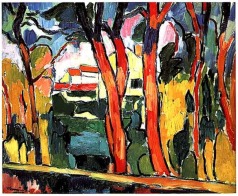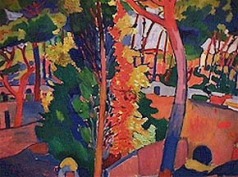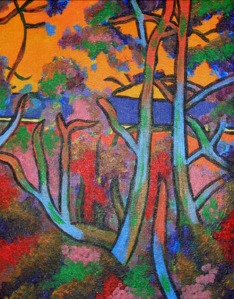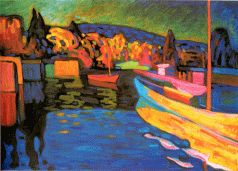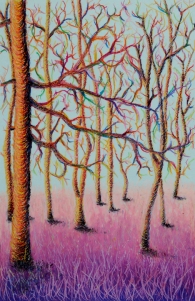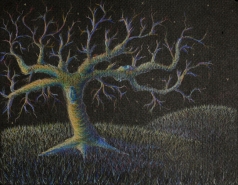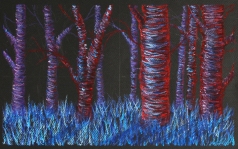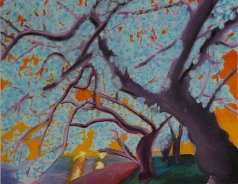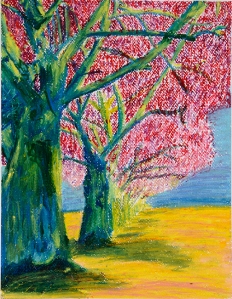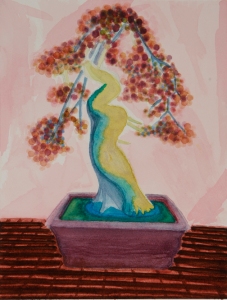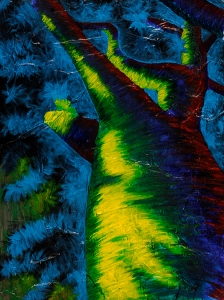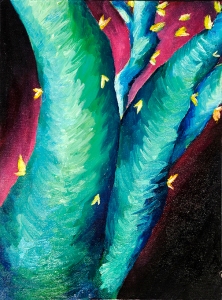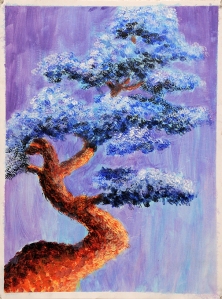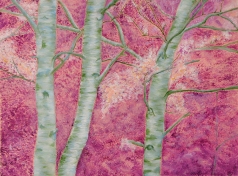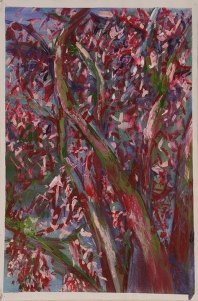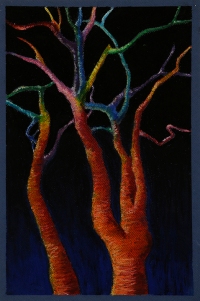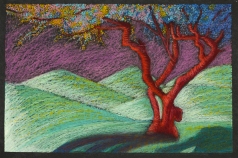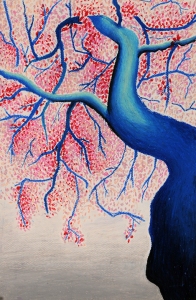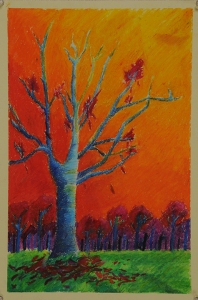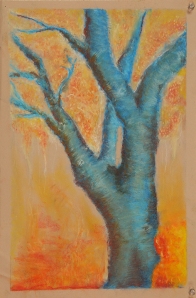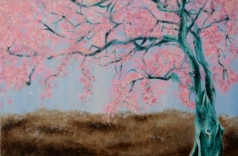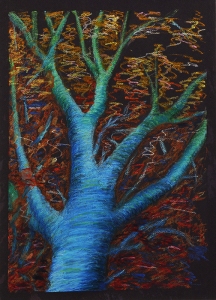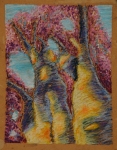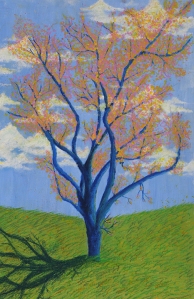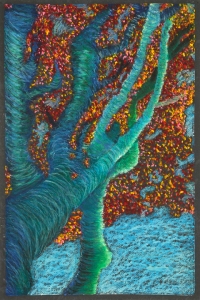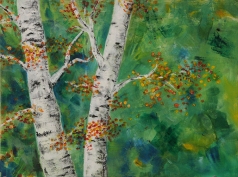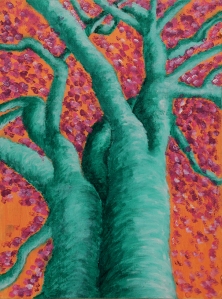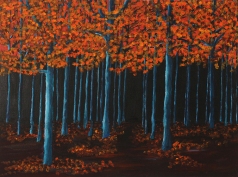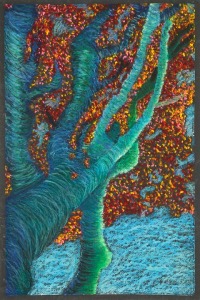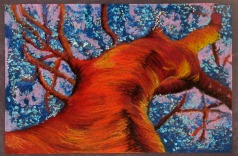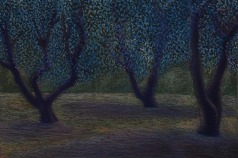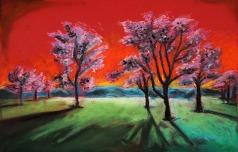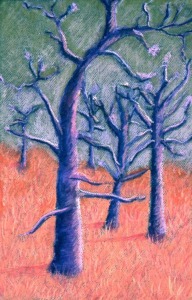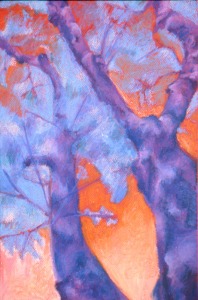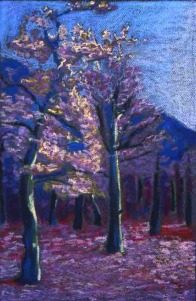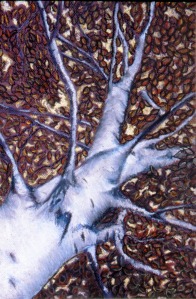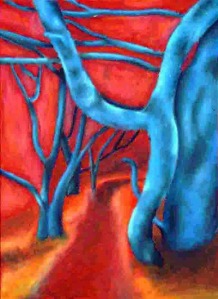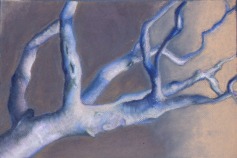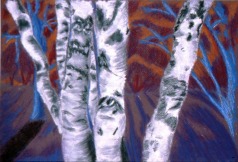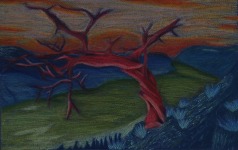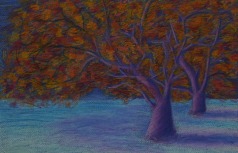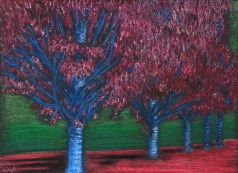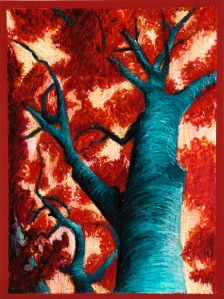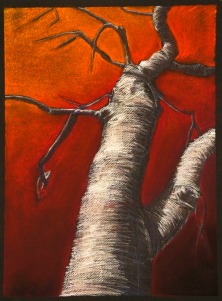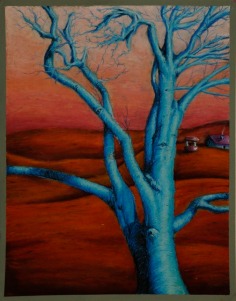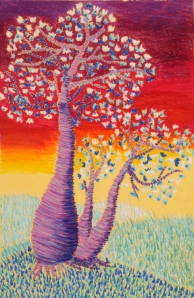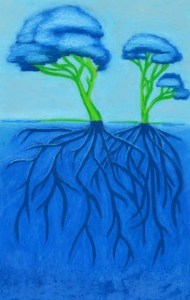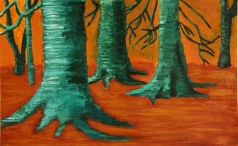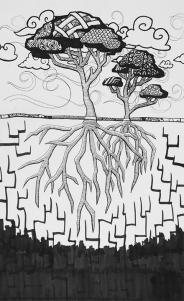Borrowed from Mt. Eden High school.
Fauve Tree/Landscape
Fauvism is the style of les Fauves (French for “the wild beasts”), a
group of early twentieth-century artists whose works emphasized strong
color.
The images below are paintings by several founders of the Fauve movement. Notice how color is used for both highlight and shadow, rather than black and white making parts appear lighter or darker.
The pieces below are projects from Mt. Eden High school AP Studio Art Students.
Process:
You will use oil pastel or acrylic paint to create a landscape in exaggerated and often strange colors.
You may also use images from Creative commons:
flickr images
pixabay images
google image search
Other photos must get pre-approved by me.
Your photo is only a GUIDE. It will help you create some depth, guide your composition, but you’re NOT just copying the photo. You will have to simplify and alter things to make it work for this assignment.
2. Lightly sketch composition in pencil first keeping the rule of thirds in mind. Click HERE for more on the rule of thirds!
3. Begin adding color!
The images below are paintings by several founders of the Fauve movement. Notice how color is used for both highlight and shadow, rather than black and white making parts appear lighter or darker.
The pieces below are projects from Mt. Eden High school AP Studio Art Students.
Process:
You will use oil pastel or acrylic paint to create a landscape in exaggerated and often strange colors.
- Brown may NOT be used on the tree trunk or branches.
- Green is NOT may not be used on the leaves.
- Your paper or painting surface should have intense color (use art paper or prime canvas w/ color)
You may also use images from Creative commons:
flickr images
pixabay images
google image search
Other photos must get pre-approved by me.
Your photo is only a GUIDE. It will help you create some depth, guide your composition, but you’re NOT just copying the photo. You will have to simplify and alter things to make it work for this assignment.
2. Lightly sketch composition in pencil first keeping the rule of thirds in mind. Click HERE for more on the rule of thirds!
3. Begin adding color!
